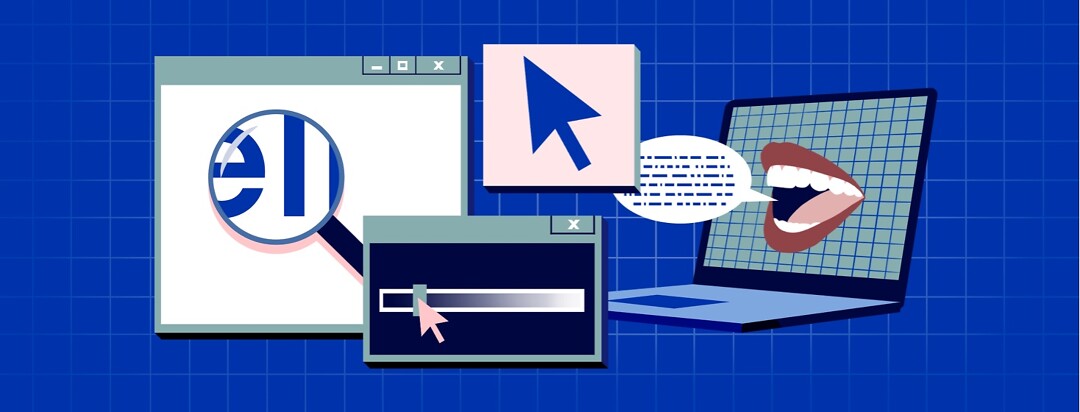Low Vision Accessibility Options for Microsoft Windows
Much of what we do in our lives today includes technology. This can be good or bad news, but it’s the reality of the world we live in. My work desktop recently stopped working and when I got it back up and running, I had to reset all of the settings on my computer to how they were before. As I went through, I thought it might be helpful to let everyone know the neat things desktops can do, as well as how to get them to do it!
Personalizing technology
Personalization is important when navigating technology as a low vision individual. We each prefer different brightness and font type, size, and color. I am a teacher and use three computers each day to teach my kiddos remotely, in the classroom, and do all of the administrative things that are done in a classroom on a daily basis. I prefer to do tasks such as taking attendance, entering grades, or emailing parents on my desktop.
I have a DELL desktop that runs using the Microsoft Windows operating system. The tips in this article will be for the Microsoft Windows operating system (Windows OS), however, whatever OS you use probably has similar capabilities.
Ease of access settings
Each setting I discuss in this article can be found by clicking the Start Menu, which looks like a little window at the bottom right-hand corner of your computer screen. Then clicking the Windows Settings icon that looks like a wheel or gear. Once there, you can click on the Ease of Access icon that says ‘narrator, magnifier, high contrast’ underneath it. There, you will find a plethora of options under vision that may be helpful for you when using your computer (there is also a section of options to help with hearing!).
I will highlight some of my favorites in this article!
What you see right away
From the main ‘Ease of Access’ page, you’ll see options on the left-hand side of your screen. Under Display you’ll immediately see options like Make text bigger and Make everything bigger and Make everything brighter.
I love, love, LOVE how they’ve worded this so simply and clearly for us! Yes to all of this if you ask me. Bigger and brighter everything, count me in!
Changing the size and color of things
Under Make text bigger and Make everything bigger, you will see quick and easy ways to do just that.
You can even change the size and color of your font and cursor. My cursor is double the size of a normal cursor and is a pretty blue color. This helps me to better see my cursor when I’m using it across my classroom on the projected screen on the board. I went from not being able to see it at all, to seeing it clearly across the room. Thank you, Windows settings!
High contrast screens
Here, you can also change your screen to High contrast settings, which will turn the main part of your screen black, with lighter colored fonts (usually white or yellow). This is done under Background settings. Every tiny thing you may want to be a different, more visible color, can be done here. There’s even a setting for changing your taskbar color.
Filtering blue light
The Microsoft Windows OS calls filtering blue lightturning on/off night light. Under Make everything brighter, you’ll click on the phrase Change brightness automatically or use night light to play around with the brightness of your screen. The factory setting for these computers is to have night light off, so if you want it on, you’ll have to click the toggle to turn it on. Remember, turning night light on turns off your blue light (or turns it down).
Magnifying options
If you prefer to have more than just your font size bigger, you can magnify parts of your screen as you scroll your cursor on top of different things, or you can magnify all of your screen at once. These things can also be done under Make everything bigger.
Have your computer read aloud for you
There is another helpful setting called Narrator where, with the click of a button, you can have whatever is on your screen read aloud to you.
Something new I learned while playing around with settings before writing this article is Eye control. This setting, when paired with a screen reading app, can read words aloud for you as you read them on your screen. That’s pretty incredible stuff!
Conclusion
Struggling to see doesn’t mean we can’t continue to do the things we want to do. Technology is our friend if we know how to use it to its full potential. I hope this article was helpful to anyone working with the Microsoft Windows OS. Have any more helpful tips? Comment with them below!
Andrea Junge

Join the conversation